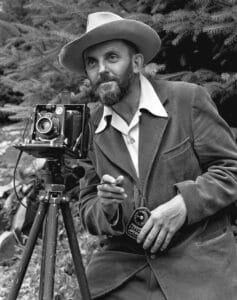The Boy Who Captured Joy: An Introduction to Jacques-Henri Lartigue
In the history of photography, few names evoke such a pure and unadulterated sense of joy as Jacques-Henri Lartigue. Unlike many artists who pursue a singular, often solemn vision, Lartigue’s work is a vibrant diary of a life lived with enthusiasm and wonder. Born into a wealthy French family in 1894, he was given his first camera at the tender age of seven. From that moment, he began a lifelong project not of documenting the world as it was, but of capturing the fleeting moments of delight that filled his own.
A Childhood Through the Lens
Lartigue’s early work is extraordinary because it is the world seen through the eyes of a child. Using a large-plate camera he had to operate by standing on a stool, and later a handheld Brownie No. 2, he turned his lens on his immediate world: his elegant family, their adventures, and the rapid technological innovations of the era. His photographs from the early 1900s are not stiff, formal portraits but dynamic, candid snapshots. He captured his cousin ‘Zissou’ in mid-air during a jump, the blur of a new automobile speeding past, and the billowing gowns of ladies strolling in the Bois de Boulogne. These images are remarkable for their informal composition and their ability to freeze a moment of pure movement and emotion, a technique that would feel revolutionary decades later.
The Painter-Photographer and His Enduring Themes
Although the world knows him as a master photographer, Lartigue always considered himself a painter first. He studied at the Académie Julian in Paris, and this painterly sensibility deeply influenced his photographic eye, particularly his experimentation with the Autochrome colour process. Whether in colour or his more familiar black and white, his subjects remained consistent: the thrill of automobile races like the Grand Prix at Dieppe, the fashionable energy of seaside resorts, and the simple, playful pleasures of kite flying and family games. His work, created throughout the upheavals of two world wars, maintains a charming insularity, a personal refuge of happiness and leisure.
A Legacy Rediscovered
For most of his life, Lartigue’s immense photographic archive was a private passion. It wasn’t until 1963, when he was nearly 70 years old, that his work was introduced to the world through a landmark exhibition at the Museum of Modern Art in New York. The art world was captivated. Here was a body of work that pre-empted the spontaneity of street photography and celebrated the beauty of everyday life with an authenticity that resonated deeply. This belated acclaim transformed him into a celebrated figure, culminating in his being named a Chevalier of the Légion d’Honneur in 1975. Publications like Diary of a Century cemented his status as one of photography’s most joyful and influential voices.
Bringing the Spirit of Art into Your Home
The magic of Lartigue’s photography lies in its ability to transform a moment into a lasting emotion, a skill shared by the finest art photographers. His focus on the elegance of form, the play of light, and the drama of movement finds a parallel in contemporary photographic art. For those who appreciate this blend of technical mastery and expressive vision, I invite you to explore my own curated collection of architectural photography. These monochrome works explore the profound beauty and quiet drama of the built environment, offering a modern contemplative counterpoint to Lartigue’s kinetic energy. Each piece is available as a fine art print, ready to bring a sense of depth and perspective to your space.
The Eternal Amateur
Jacques-Henri Lartigue continued to photograph with the same wide-eyed enthusiasm until his death in 1986. He never lost the spirit of the amateur—the lover of the craft. His work stands as a powerful reminder that the most compelling art often comes not from a desire for recognition, but from a genuine love of seeing and a boundless curiosity for life. He teaches us to find art not only in grand subjects but in the joyous, fleeting moments that happen right in front of us.









One Comment
What’s your favorite way to capture everyday joy in a photograph, and do you think Lartigue’s spontaneous style still influences how we take pictures today?